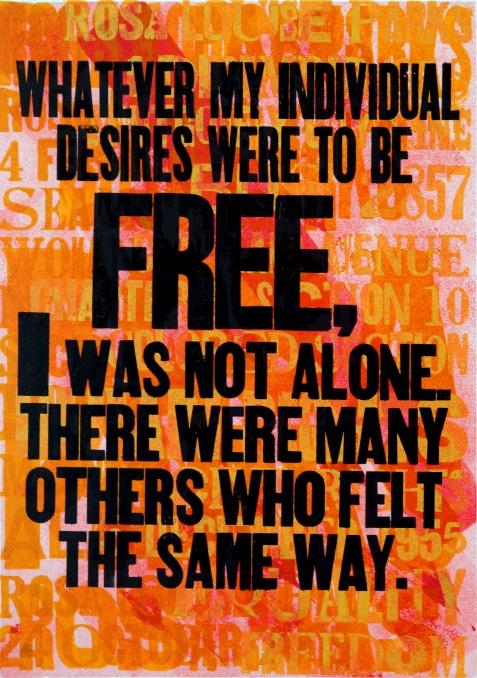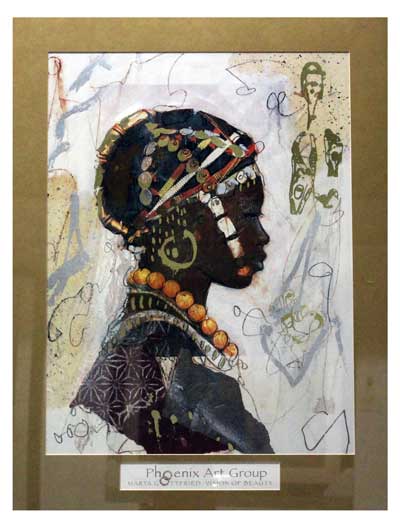Griots’ Gallery Inaugural Exhibition Catalog Essay
Another gallery? Why here? Why Now? Miami has enjoyed spectacular growth as a visual arts destination. Seemingly there is a gallery simply a stone’s throw away from every corner. The Design District has moved north into Little Haiti. Several galleries have established “beachheads” north of 82nd Street. These galleries are appearing without any specific connection to the neighborhoods or communities in which they now reside.

This growth spurt in visual arts venues has been irregular and not inclusive of all segments of the community. Miami is a polyglot, diverse community that draws people around the world with many émigrés from Central and South America and Africa. It also has a large indigenous people of Native Americans and African Americans. However, Black diaspora art and artists are one of the segments that is insufficiently represented. Too often the mainstream arts community is focused on the “tried and true” and promote artists that have established pedigrees and track records. There is frequently little room for the exceptional or the experimental.
The Gallery and Academy:
– will provide a differing curatorial perspective from the mainstream arts community, recapturing the humanity of those who are often discarded, forgotten and marginalized.
– will address the specific deficits related the underrepresentation of black diaspora artists and their accomplishments that have gone unnoticed and unacknowledged.
– will serve as an agent of change and development for this community, directing our attention internally to the neighborhood as well as outwardly to the greater Miami Arts Community.
– will serve as a resource for this neighborhood and the larger community.
– will provide an intimate setting where residents can feel welcome, comfortable, and encouraged to participate in the arts.
– will provide validation to the fact that art is not an elitist preoccupation, but a key voice for human self-expression.
– will provide opportunity to encourage experimentation, reimagine identities, and activate liberation.
– will help residents develop an expanded worldview that informs them that they can be much more than they currently are.
– will showcase the diversity of the black art diaspora and help our communities imagine the possibilities that can lead to fulfilling forms or identity and being, showing that art is essential to their lives, not peripheral.
– will assist our neighborhood in telling its truths and singing its songs.
Internally we must reveal the community to itself. Who are we? How did we come to be? Where do we go from here? Though we have many often-inchoate thoughts, diaspora artists provide the visualization and the incarnation of those thoughts so that subsequently they can be recognized and resolved.
The health of a community is proportional to the depth of its artistic development.
– Samella Lewis, Black Artists on Art Volume
Externally, we will create critical conversations with mainstream venues and establish a more visible presence in that community that challenges current cultural paradigms and grapples with ideas of agency, perspective, aesthetic choices and strategies of presentation and communication.
When visual images were/are presented to an external community, blacks were frequently presented as cartoons or caricatures. We must replace images that inadequate to express our full humanity. The record must be corrected.
…using art for the thing that it does best, which is to create human portraits and communicate ideas and forge a climate where people of different races or classes are known to you because they make themselves known. In the simplest terms, art humanizes. It opens the circuit of empathy. And once that process happens, it’s that much harder to think of people as a statistic. Art reverses the alienation that can creep into society. Does Black Culture Need to Care What Happens to Hip Hop?
Vulture.com MY 27, 2014
– Questlove (The Roots)

To support these efforts it is essential that we expand the notion of what is considered to be black art. In its simplest form, black art is art produced by black artists. In many circles, this production is reduced to artwork where there is some evidence of black content/presence in the works produced. Black artists have created remarkable art without any overt indication of their ethnicity or cultural background. We would like to correct this common, but misinformed opinion that “blackness” must be evident in black artistic production.
As a gallery and academy we support black diaspora arts through cultural programming that will include the following activities:
– Providing exhibition space for artists who will share and discuss their art,
– Developing collectors and connoisseurs for the art,
– Educating and informing the public about the breadth and depth of this art,
– Teaching techniques that are essential to preserving and conserving the art as material artifacts,
– Capturing and archiving the history of the artistic production,
– Stimulating appropriate analysis, criticism and interpretation of these works,
– Supporting critical conversations throughout greater Miami related to this field,
– Encouraging black diaspora art research and related scholarly production,
– Training and Educating Students for careers/employment in the art industry, and
– Expanding the definition of black art,
– Griots’ Gallery and Academy Core Collection Description.
The Griots’ Gallery and Academy has a core collection of artwork that provides a broad sampling of Black Diaspora art. This core is reflective of the collection efforts of a married couple over the past twenty years. It has more than 700 works and represents over 200 artists. It contains a broad cross-section of black diaspora artistic production—media, styles, geographic distribution, eras, artists, etc.
Media: Oils, Acrylics, Drawings, Watercolors, Mixed Media, Etchings/Engraving, Collage, Sculpture, Photographs, and Prints.
Styles: Cubist, Vernacular, Art Brut, Abstract, Figurative Abstract, Abstract Expressionist, Landscape Abstract, Still Life, Proto-afrofuturist, and Magical Realist.
Geography: America, Africa, Haiti, Caribbean, and South America.
Artists: Old Masters, Emerging, Mid-Career, and Contemporary.
Eras: Mid 20th Century to the Present.
This core collection highlights black diaspora art production from a variety of perspectives and showcases its breadth and depth.
Through art, we work in a space of imagination. Imagination allows us to envision a range of future possibilities and thus guide us into that future. Through the arts we can review our history and place ourselves in it. We can re-conceptualize the past in ways that assist us in moving forward. We offer the community ways of seeing and being that more closely resonates with their lived existence than they are provided from the commonly expressed western canon.
Welcome to Griots’ Gallery and Academy!
Please take the journey with us–Enjoy and Learn.
